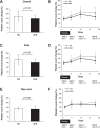Evaluation of the Efficacy of Lusutrombopag for Chronic Liver Disease Based on Pre-Treatment Platelet Counts: A Retrospective Multicenter Study
- PMID: 39742152
- PMCID: PMC11686089
- DOI: 10.1002/jgh3.70081
Evaluation of the Efficacy of Lusutrombopag for Chronic Liver Disease Based on Pre-Treatment Platelet Counts: A Retrospective Multicenter Study
Abstract
Background: Oral thrombopoietin receptor agonists are used to treat thrombocytopenia in patients with chronic liver disease who are scheduled for invasive procedures. The efficacy of lusutrombopag based on the pretreatment platelet count was investigated.
Methods: Patients treated at nine hospitals from December 2015 to December 2023 were included. Efficacy was assessed by comparing the proportion of patients achieving a platelet count ≥ 50 000/μL and the change in platelet count.
Results: Seventy patients were eligible for evaluation. Patients with a pretreatment platelet count < 40 000/μL had a significantly lower rate of achieving a platelet count of ≥ 50 000/μL than those with a pretreatment count of 40 000-50 000/μL (62.5% vs. 84.2%, p = 0.038); however, there was no significant difference in the change in platelet count (25 700 vs. 24 400/μL, p = 0.972). Patients with viral-related cirrhosis showed a significantly greater change in platelet count than the others (29 100 vs. 19 200/μL, p = 0.012). For patients receiving multiple lusutrombopag treatments, the change in platelet count was significantly lower in the second treatment than in the first treatment (26 900 vs. 20 800/μL, p = 0.041). The main adverse event observed was thrombosis (2.9%).
Discussion: Lusutrombopag increases platelet count regardless of pretreatment levels, but efficacy, defined as achieving a platelet count of ≥ 50 000/μL, may be insufficient in patients with a pretreatment platelet count < 40 000/μL. Additionally, patients with non-viral liver disease responded less well to treatment compared to those with viral liver disease. Therefore, treatment strategies should be tailored based on pretreatment platelet counts and the etiology of liver disease.
Keywords: chronic liver disease; lusutrombopag; thrombocytopenia.
© 2024 The Author(s). JGH Open published by Journal of Gastroenterology and Hepatology Foundation and John Wiley & Sons Australia, Ltd.
Conflict of interest statement
The authors declare no conflicts of interest.
Figures




Similar articles
-
Lusutrombopag Reduces Need for Platelet Transfusion in Patients With Thrombocytopenia Undergoing Invasive Procedures.Clin Gastroenterol Hepatol. 2019 May;17(6):1192-1200. doi: 10.1016/j.cgh.2018.11.047. Epub 2018 Nov 28. Clin Gastroenterol Hepatol. 2019. PMID: 30502505 Clinical Trial.
-
Real-life experience of lusutrombopag for cirrhotic patients with low platelet counts being prepared for invasive procedures.PLoS One. 2019 Feb 15;14(2):e0211122. doi: 10.1371/journal.pone.0211122. eCollection 2019. PLoS One. 2019. PMID: 30768601 Free PMC article.
-
Efficacy of Lusutrombopag for Thrombocytopenia in Patients with Chronic Liver Disease Scheduled to Undergo Invasive Procedures.Intern Med. 2021 Mar 15;60(6):829-837. doi: 10.2169/internalmedicine.5930-20. Epub 2020 Oct 21. Intern Med. 2021. PMID: 33087674 Free PMC article.
-
Systematic Review with Meta-Analysis: Efficacy and Safety of Lusutrombopag for Severe Thrombocytopenia in Patients with Chronic Liver Disease Undergoing Invasive Procedures.Adv Ther. 2022 Sep;39(9):4169-4188. doi: 10.1007/s12325-022-02235-w. Epub 2022 Jul 14. Adv Ther. 2022. PMID: 35836089 Free PMC article.
-
Thrombopoietin Receptor Agonists in Patients with Chronic Liver Disease.Semin Thromb Hemost. 2020 Sep;46(6):682-692. doi: 10.1055/s-0040-1715451. Epub 2020 Aug 20. Semin Thromb Hemost. 2020. PMID: 32820479 Review.
References
-
- Afdhal N., McHutchison J., Brown R., et al., “Thrombocytopenia Associated With Chronic Liver Disease,” Journal of Hepatology 48 (2008): 1000–1007. - PubMed
-
- Dieterich D. T., Bernstein D., Flamm S., Pockros P. J., and Reau N., “Review Article: A Treatment Algorithm for Patients With Chronic Liver Disease and Severe Thrombocytopenia Undergoing Elective Medical Procedures in the United States,” Alimentary Pharmacology & Therapeutics 52 (2020): 1311–1322. - PubMed
LinkOut - more resources
Full Text Sources

